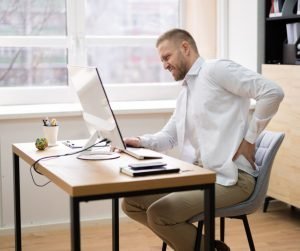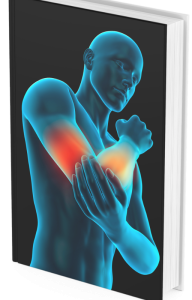What causes lower back pain when sitting?
Lower back pain when sitting can be a common and often debilitating issue that affects many individuals. There are several factors that can contribute to this type of pain, including muscle spasms, pressure from sitting, and certain medical conditions such as herniated discs and sciatica. Understanding these causes can help individuals find relief and prevent future occurrences of back pain when sitting.
Muscle Spasms: A Common Cause
Muscle spasms are probably the most common cause of back pain when sitting. These involuntary contractions can occur in the muscles of the lower back, causing tension, pain, and discomfort. Muscle spasms can be the result of various factors, including poor posture, muscle imbalances, and overuse. Additionally, stress and anxiety can contribute to muscle tension and increase the chances of experiencing painful spasms when sitting for extended periods of time.To alleviate muscle spasms and reduce the risk of experiencing back pain when sitting, it is important to improve posture, engage in regular exercise to strengthen and mobilise the whole body as studies show that all exercise helps.
Pressure and Prolonged Sitting
Pressure from sitting can also trigger back pain, especially during long car rides or extended periods of sitting at a desk. Sitting for prolonged periods can place excessive pressure on the discs of the spine, causing them to compress and potentially herniate. This pressure can also lead to a reduction in blood flow and oxygen supply to the muscles, further contributing to discomfort and pain.To alleviate pressure-related pain from sitting too long, it is important to take frequent breaks and engage in activities that promote movement and circulation. Incorporating ergonomic modifications, such as using lumbar support cushions or adjusting chair height and position, can also help alleviate pressure on the spine and reduce the risk of pain while sitting.
Medical Conditions: Herniated Discs and Sciatica
In addition to muscle spasms and pressure, certain medical conditions can also cause back pain when sitting. Herniated discs occur when the soft inner material of a spinal disc protrudes through the tough outer layer, putting pressure on nearby nerves and causing pain. Sciatica is a condition that occurs when the sciatic nerve, which runs from the lower back through the hips and down each leg, becomes compressed or irritated.Individuals with herniated discs or sciatica may experience increased pain and discomfort when
sitting due to the pressure placed on the affected nerves. Treatment for these conditions include Osteopathy and Acupuncture.
Prevention and Management
Preventing and managing back pain when sitting involves a combination of lifestyle modifications and targeted exercises. Some strategies to consider include:
- Engaging in regular exercise to strengthen the body
- Practicing good posture and maintaining proper spinal alignment while sitting
- Using ergonomic chairs or cushions to provide adequate support
- Taking regular breaks from sitting and engaging in movement activities
- Managing stress levels through relaxation techniques or therapy
Lower back pain when sitting can be caused by a variety of factors, including muscle spasms, pressure from sitting, and certain medical conditions. By understanding these causes and implementing appropriate preventive measures, individuals can find relief and reduce the risk of future discomfort when sitting for extended periods of time.
1. Manage back pain by yourself and modify your activity for a few weeks.
Initially, when you experience mild to moderate back pain, it is advisable to manage it on your own. You can begin by implementing self-care techniques such as rest, ice or heat therapy. Additionally, modifying your activity level is crucial during this self-management period. Avoid engaging in heavy lifting or strenuous exercises that may aggravate the pain.It is important to note that during this period of self-care, you should pay attention to any changes in the pain level or symptoms. If the pain persists for more than a few weeks or worsens despite these self-management techniques, it is advised to seek medical advice.
How to Relieve the Pain Related to Sitting too Long
Dealing with pain can be incredibly challenging, especially when it comes to back pain. However, there are effective strategies that can help relieve the discomfort and improve your quality of life. In this blog section, we will explore various techniques and treatment options to help you find relief from back pain.
Lie Down to Relieve the Pain
One of the immediate steps you can take to alleviate back pain is to lie down. Find a comfortable position that minimizes strain on your back and allows you to relax. However, it’s important to remember that lying down should not become a long-term solution. The ultimate goal is to regain the ability to stand and move.
Movement is often the Best Medicine
While resting is essential initially, movement is often the best medicine for relieving back pain. Engaging in gentle exercises and activities can help improve blood flow, strengthen the muscles supporting your back, and reduce stiffness. Walking, swimming, and yoga are some great options to consider.
Treatment Options
In addition to activity modification and exercise, there are several treatment options available to address back pain:
- Activity Modification: This involves assessing your daily routine and making necessary adjustments to avoid activities that worsen your pain. It may include lifting techniques, posture correction, and ergonomic modifications.
- Exercise: Physical therapy and specific exercises tailored to your condition can help improve flexibility, strengthen muscles, and reduce pain.
- Manual Therapy: Techniques such as Osteopathy can provide relief by reducing muscle tension, improving joint mobility, and promoting healing.
Incorporating Self-Care Practices
In addition to the mentioned treatment options, self-care practices play a vital role in managing and relieving back pain. Here are some self-care strategies you can incorporate into your routine:
- Proper Posture: Maintain good posture while sitting, standing, and walking. Avoid slouching or hunching over, as this can strain your back.
- Weight Management: Excess weight puts additional stress on your back. Maintaining a healthy weight can help alleviate strain on your spine.
- Regular Movements: Avoid prolonged periods of inactivity. Take short breaks to stretch or change positions during prolonged sitting or standing.
- Heat and Cold Therapy: Applying heat or cold packs to the affected area can help reduce pain and inflammation. Experiment to find the temperature that works best for you.
- Stress Management: Stress can contribute to muscle tension and exacerbate back pain. Incorporate stress-relieving techniques such as deep breathing exercises, meditation, or hobbies you enjoy.
Remember, each individual’s experience with back pain is unique, and there is no one-size-fits-all approach. It may require some trial and error to determine which strategies provide the most relief for you.
Preventing problems
When it comes to back pain, prevention is key. By adopting a few simple habits and incorporating regular exercise into your routine, you can help strengthen your back and reduce the likelihood of future episodes of pain.
Regular physical activity
Engaging in regular physical activity is essential for maintaining a strong and healthy back. It helps to improve muscle strength and flexibility, which in turn can reduce the risk of back pain. Exercise can also help with weight management, which can alleviate pressure on your back. Incorporate activities that focus on strengthening your core and back muscles, such as walking, swimming, or yoga.
Avoid prolonged sitting
Sitting for extended periods of time can put a strain on your back and contribute to the development of pain. It is important to take breaks throughout the day and avoid sitting for long stretches. Incorporate short walks or stretches into your routine to give your back a break. If your job requires sitting for long periods, consider investing in an ergonomic chair or using a standing desk to alleviate the pressure on your back.
Simple exercises
In addition to regular physical activity, simple exercises can be incorporated into your daily routine to help keep back pain at bay. These exercises can be done in the comfort of your own home and require minimal equipment. Some examples include:
- Lie flat on your back with your knees bent and feet flat on the floor. Slowly lift your hips off the ground and hold for a few seconds before lowering back down. Repeat 10-15 times.
- Stand with your feet shoulder-width apart and your hands on your hips. Slowly bend forward at the waist, keeping your back straight. Hold for a few seconds before returning to the starting position. Repeat 10-15 times.
- Do pelvic tilts by lying flat on your back with your knees bent. Tighten your abdominal muscles and push your lower back into the floor. Hold for a few seconds before releasing. Repeat 10-15 times.
By incorporating these simple exercises into your routine, you can help strengthen your back muscles and improve flexibility, reducing the risk of back pain.






